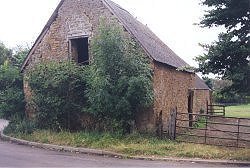Page 7 of 12
The Templars and the Ark of the Covenant

Sir Walter Raleigh, the Elizabethan explorer who excavated the ruins of the Herdewyke chapel in 1600 in search of the legendary Templars treasure. He found nothing, but records that still survived at the time convinced him it was real.
According to the Warwickshire historian William Dugdale, who wrote in 1656, the Elizabethan explorer Sir Walter Raleigh visited Herdewyke in 1600 and was told a story about the Templars hiding treasure in the area. For some reason or other, Raleigh took it seriously and spent months looking for treasure. He persuaded his wealthy wife (Elizabeth Throckmorton, Maid of Honor to Queen Elizabeth I) to buy the Herdewyke estate and had a gang of men excavate the ruins of the Templar preceptory. Apparently, nothing was found. Nevertheless, could this legendary treasure have been the same relics that had once been housed in the Herdewyke chapel in Ralph de Sudeley’s time?
The Herdewyke estate had encompassed about nine square miles and included both a region of low-lying land now called Temple Herdewyke after the Templars who were once there, and an area of high land rising to over a thousand feet to the immediate southeast of it called the Burton Dassett Hills. Temple Herdewyke and the Burton Dassett Hills are now sparsely populated with a couple of tiny villages and a few small farms. Nothing remains of the medieval barracks or monastic buildings but, remarkably, the shell of the preceptory chapel still survives. The country lane that leads up into the Burton Dassett Hills from the northwest runs right past it. When Graham first visited the chapel ruin it was being used as a cowshed, but it has now been renovated into a country house.
The Herdewyke Treasure

The Templar chapel as it survived, forgotten for many years as a barn. It has now been renovated as a country house (right).
By the early 1300s there were hundreds of Templar preceptories throughout Europe, and many had become exceptionally wealthy. Although their riches were originally plunder from the Crusades, the Templars had amassed further wealth by leasing land and acting as some of the first bankers in Christian Europe. In the early fourteenth century, fearing their power and influence, the Pope ordered the Templar order to be dissolved. In England, though, King Edward II had fallen out with the Pope and allowed the order to continue, particularly as he enjoyed their financial support. However, in 1322, when they refused to continue financing the king, he ordered the Templars to be arrested and their property seized. Upon Ralph de Sudeley’s death, the Herdewyke preceptory had been bequeathed to the Templar order, and they were still in residence at the time of Edward’s purge. Accordingly, their possessions were seized by the crown - or, at least, only some of them were, if a local legend is to be believed.
Graham soon concluded that it was most unlikely that any of the Templars' sacred possessions had been hidden around or beneath the chapel. Not only was the entire area thoroughly dug by Raleigh’s men but it has more recently been excavated by archaeologists who have found nothing to indicate that anything was hidden here. Moreover, in the last couple of years extensive digging has occurred for the foundations of the modern house. There was, however, another possibility. The relics could have been hidden in another church that the Templars had built nearby.









